3D Printed Sculptures – Post-processing with Damian Swiderski
3D printing technology generally associated with rapid manufacturing and design made its way to art. Let the 3D printed sculptures of Damian Swiderski be an example confirming this bold statement.
BACKGROUND
Artistic skills of Damian Swiderski are an effect of long and multilateral education. One could call him a painter or a designer, but he considers himself a sculptor. Nevertheless, he has started as a painter, copying the works of masters to understand their techniques and styles. During and after the graduation in classical painting in Berlin, he was working for the National Theater in Berlin, Germany, painting and constructing entire scenic designs. Some of their elements were 20 meters high. It was there where he honed his skills and got familiar with many methods of material treatment. Soon after the graduation, the blooming talent was noticed by the representative of SWR broadcasting company. Damian’s TV program was focused on presenting and teaching post-processing techniques. Well-versed in both painting and sculpting, Damian began looking for a proper medium to transfer his visions.
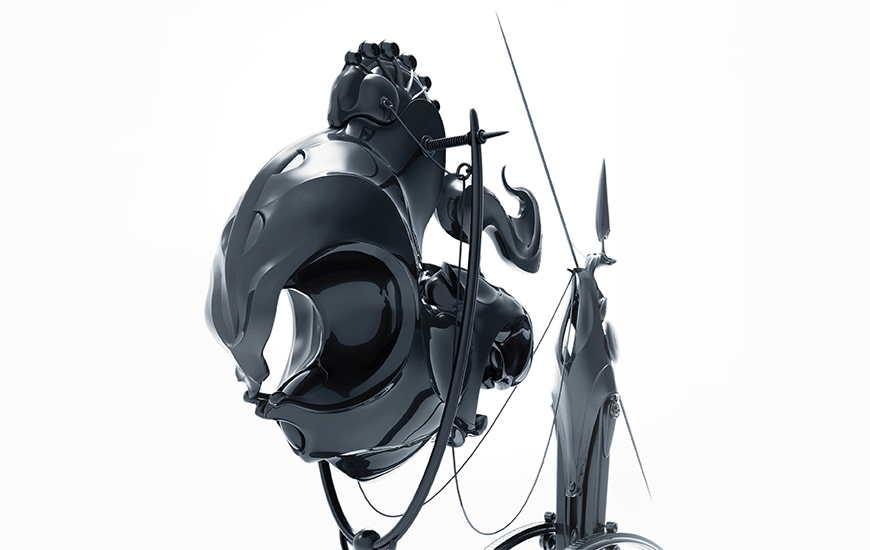
Lecture of Necronomicon book by Hans Rudolf Giger was a turning point in his career. The vibrant style of Giger became an unending source of inspiration. The author is most known for the character design for the Alien franchise. Alien, the titular xenomorph creature, became an icon of both horror and science fiction genres. If you are not familiar with Giger’s distinctive style, we recommend watching the Alien movies or even visiting his museum in Switzerland. The inspiration is real and not hidden. He even briefly met his idol in Switzerland. Paintings and other works of Giger are the key to Damian’s art. It was around 2008, when the designer decided to come back and devote himself to sculpting.

GOAL
As Damian says, the inspiration is unending and it might come in the most unpredictable moments. He admits that most of the time, it’s hard to trace its origins. The images and shapes just come to his head. Once hooked up on a particular shape or concept, he will pursue it until the perfect form is found. A tablet comes in handy as a mean of fast sketching. Furthermore, a digital image has a great advantage – it can be easily transferred to drawing software. Some pictures are left waiting intentionally, to mature and to give the artist perspective. After finalizing the flat image, Damian takes it to 3D modeling software. After many tests, Damian found Maxon Cinema 4D to be the most suitable for his works. The software is intuitive and well-equipped to satisfy Damian’s needs. He says, that working with Cinema 4D is everything he wanted from digital sculpting. In fact, Damian Swiderski was so happy with the results that he started cooperating with Maxon as a character designer.
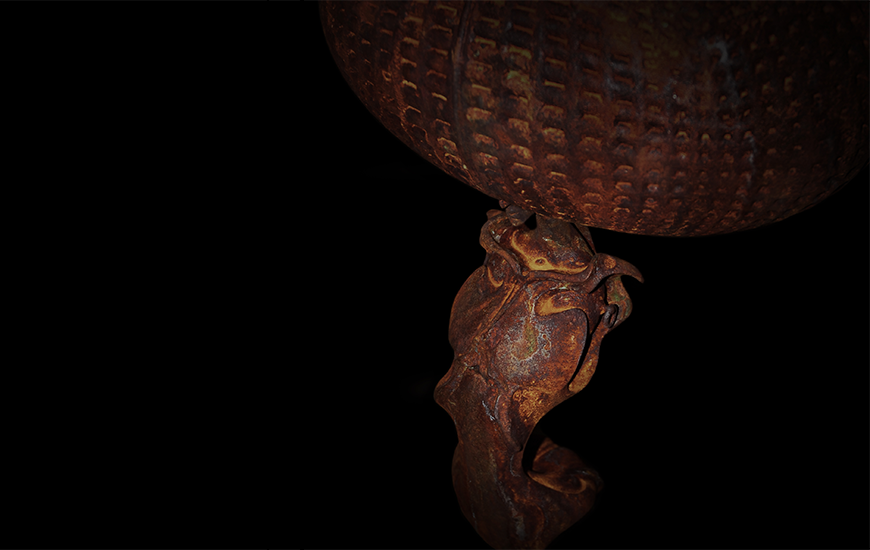
Even though, digital models are just like he wanted them, he was lacking the tangible representation. His designs were almost calling him to turn them into real sculptures. Luckily, his friend advised him to consider 3D printing. And so, Damian visited a shop and asked for 3D printed samples from various 3D printers. Among many, quality of one sample was deemed worthy of his designs. It was 3D printed on Zortrax M200. Without hesitation, Damian bought his first Zortrax M200 and a supply of 3D printing material. He admits that the decision might have been impulsive, but looking back, it was a perfect choice. Moreover, short after that, he has bought the second Zortrax M200 to keep up with 3D printing of his sculptures. After many years, he cannot imagine working on any other device. It simply gets work done flawlessly. And of course, at the beginning, he experimented with traditional approaches. Nevertheless, sculpting in modeling clay, gypsum and bronze were all too time-consuming.
PROCESS
In case of Damian Swiderski, 3D printing is just a beginning, as a 3D printed object is turned into canvas. Damian is a perfectionist in every inch, so he prefers to work step by step. 3D printing allows him to economically test various designs and techniques. Usually he starts with scaled-down versions and moves to bigger ones. Thus, his two Zortrax M200s are constantly busy 3D printing test models and sculptures’ parts. Damian Swiderski prefers to use Z-ABS, because its physical properties enable easy post-processing. The financial factor is also very important. The economical material is ideal for extended iterating sessions. Furthermore, Z-ABS is durable enough to withstand heavy post-processing. He likes to go big with his sculptures, just like he used to work in theater. Some of his 3D printed sculptures are two metres high. They of course had to be sliced into parts 3D printed separately. But, it is not a problem with Z-ABS, which can be easily merged together. Instead of acetone, he is using fast curing or construction glues. While usually his sculptures are empty inside to reduce their weight, he puts bars inside to ensure stability and durability.
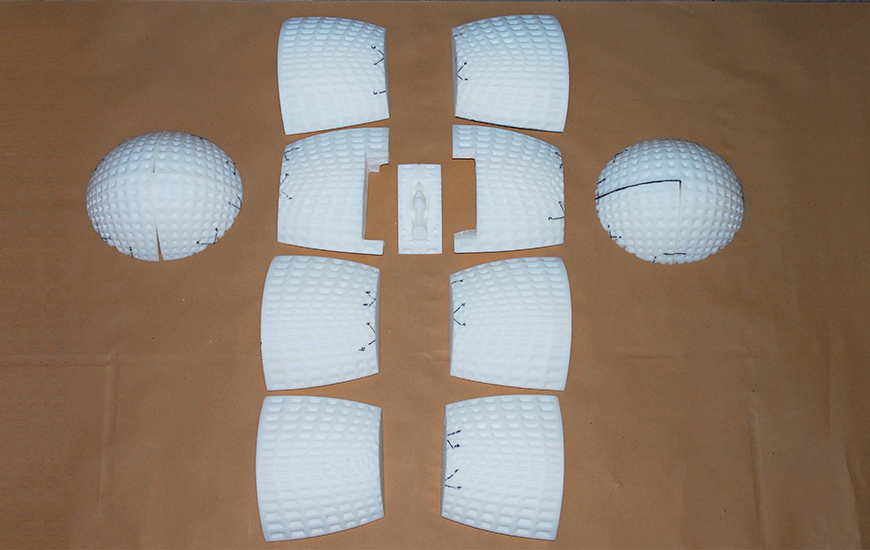
Employment in theatre allowed him to master treatment methods. It was then when he learnt how to imitate various materials and textures like bronze, marble, silver and rust. To truthfully recreate the texture and look of rust, Damian spent many hours at a local scrapyard. After all, nothing beats the field trip and interacting with real-life examples. Rusted objects have unique texture impossible to achieve without understating how it was created. Thus, he studied all sorts of rusted objects, those new and completely eaten away. Phots taken at a scrapyard allowed him to further understand the unique beauty of the process of oxidation. To achieve such features Damian uses methods that may sound risky, i.e. intentionally burning and melting surface of models. Although, we don’t recommend such brutal moves, the results are stunning indeed.
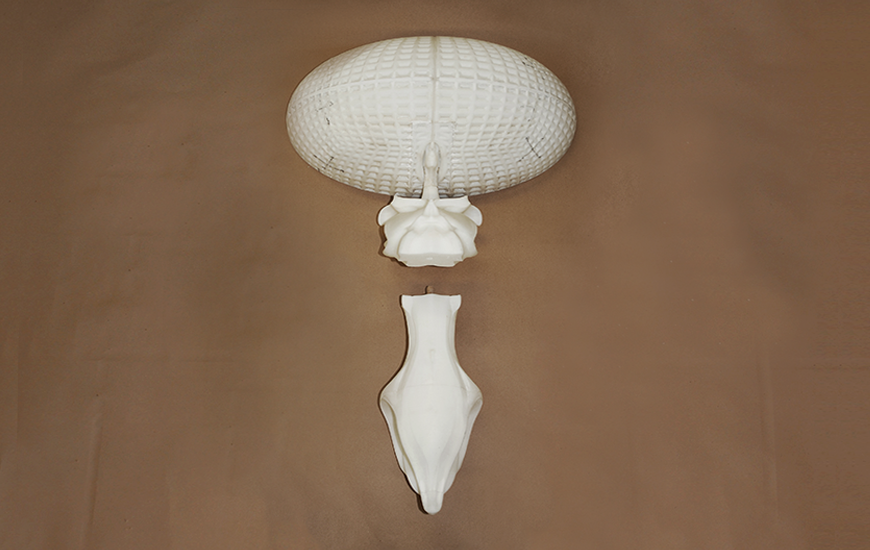
The surface of the sculpture presented above imitates peeling rust so well that only weighting or touching might reveal its true 3D printed origin. To get to this point, the artist applied many techniques. At the beginning, the entire surface of the 3D printed model was covered with thin layer of putty. When choosing the right type, Damian looks for elasticity, yet firm enough to withstand further treatment. Sanding evens the surface and removes all imperfections. Coarse surface of corroded metal peels off and crumbles. Thus, the initially smoothed surface was later treated further to improve the effect. To create irregularities and bulges, another layer of putty was applied. Multiple layers of various chemicals, paints and glossy varnishes create the texture of sculpture. Noteworthy, Damian Swiderski prefers to use natural pigments, which are closer to actual colors. Yet, the flaky texture of rust was an effect of tearing. Layers teared down one by one reveal surfaces below creating unique patterns. With an industrial-grade dryer, Damian created an even closer resemblance to oxidized metal, creating air pockets and scales. This intentional destruction is a trademark of Damian Swiderski. In total, Damian has used 12 spools of Z-ABS just for tests and research of various techniques. Low cost of Z-ABS is an important factor allowing for such freedom of experimentation.
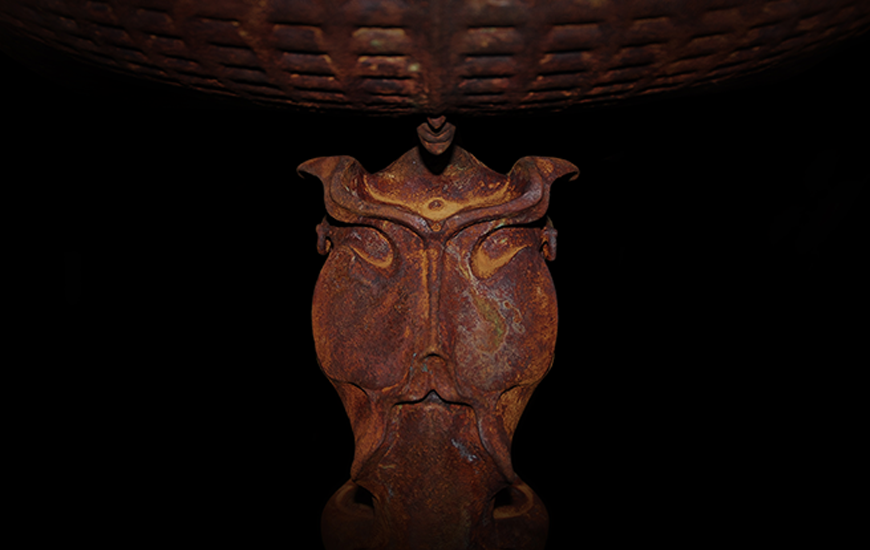
RESULT
The 3D printed sculpture is 110 cm tall, its helmet is 67×40 cm. Damian Swiderski named it Drone. It took 8 spools of Z-ABS and 4 weeks of 3D printing to finish. The piece of art was designed and created as a part of Damian’s collaboration with Maxon. It was displayed at CTN Animation Expo in Los Angeles, USA. The visitors couldn’t believe that the sculpture was 3D printed. Only after touching it, they could be persuaded that it was not made with metal. Only closer inspection allowed them to understand it was a product of a 3D printer and Damian’s skills. There was no end to questions about techniques applied. Damian was well prepared to answer them all. Maxon wanted to present Cinema 4D as a software not only for concept art, but also as a fully capable tool for artists. Damian happily obliged them with stunning example.
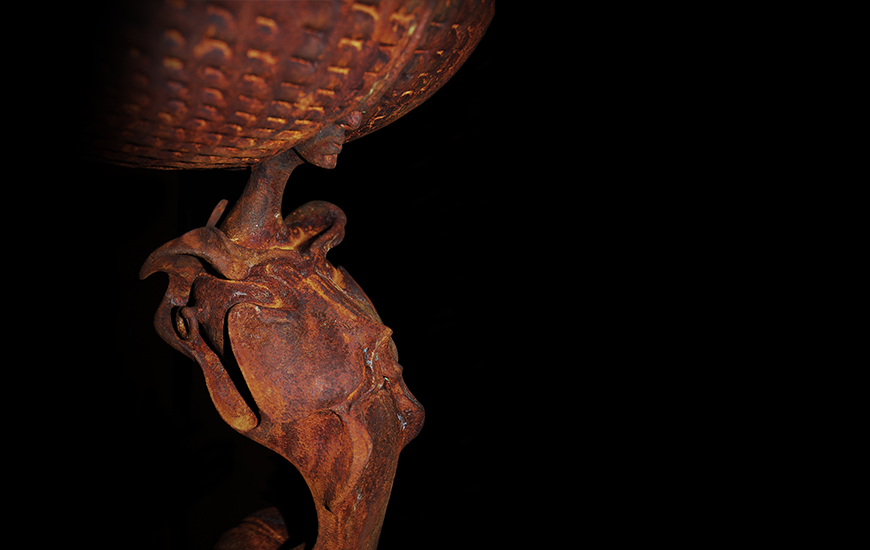
CONCLUSION
Damian Swiderski is content with his high-performing and always reliable 3D printers. As he says, no need of manual tweaking and longsome setting adjusting are icing on the cake. Everything is working as intended since the first print. Furthermore, Zortrax M200 are almost maintenance-free, with sporadic upkeep needed. He cannot imagine his work without Zortrax M200. What he really regrets is that he found out about 3D printing so late. Who knows what he could done, if the 3D printers were available earlier in his career. He wants to start making even bigger sculptures now. Zortrax M300 will be a natural choice for him, knowing the proficiency of Zortrax 3D printers. Alternatively, he jokes that two more Zortrax M200s would do the trick.
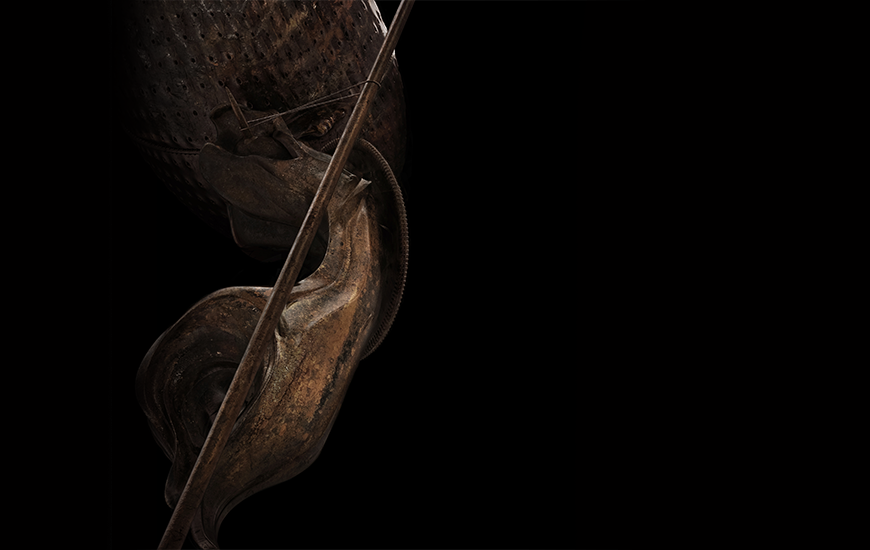
The sculptures, paintings and furniture of Damian Swiderski are spread out around the globe. Most of his works are made on request. Although, he works almost nonstop, concentrating on art galleries and commercial clients, he would like to come back to teaching. The time spent in front of the camera talking about art and post-processing was very inspirational. Furthermore, he thinks that his skills should be passed over and we couldn’t agree more! Stay tuned.